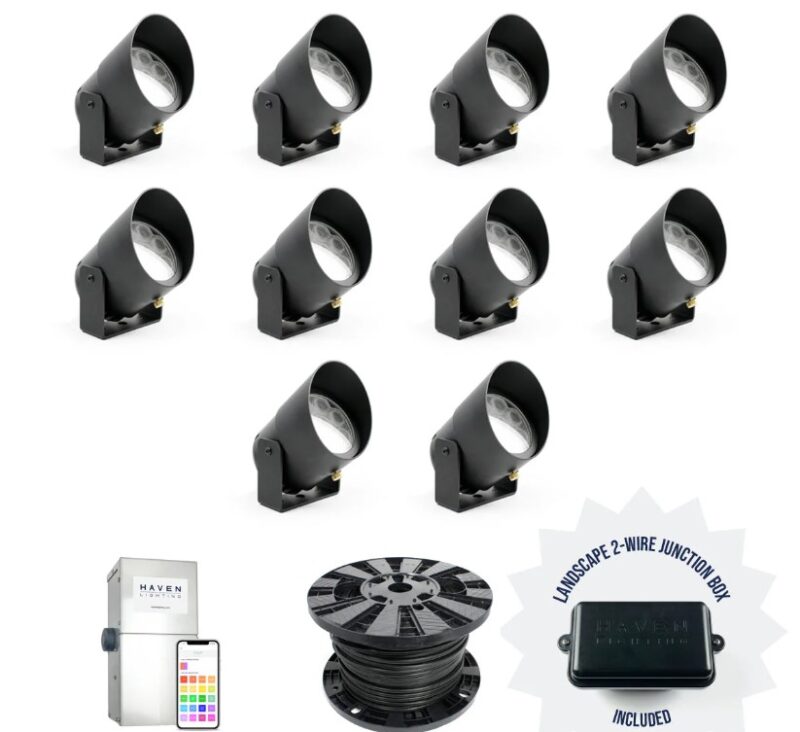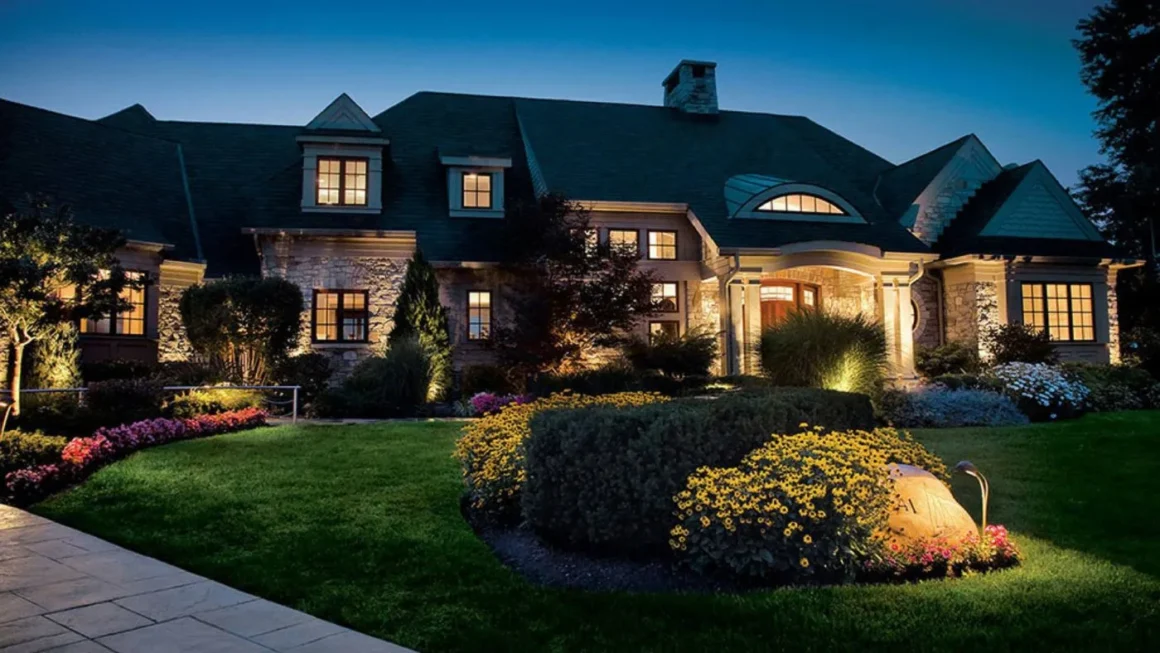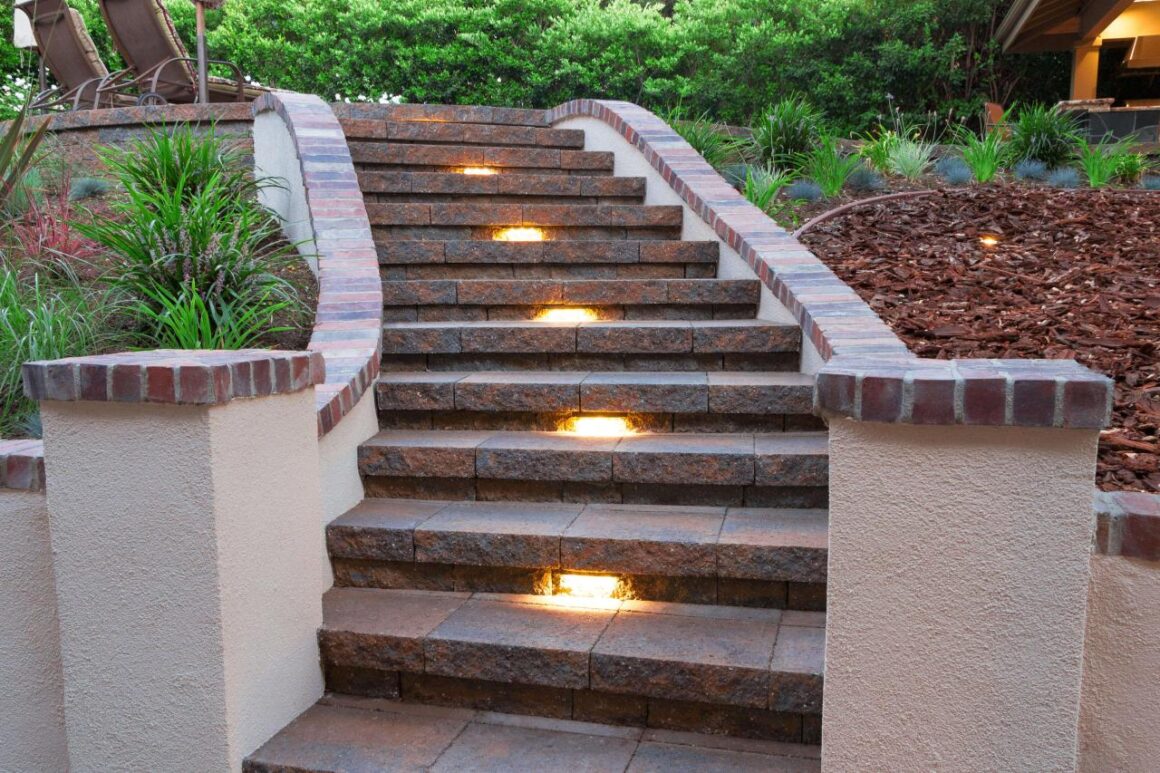Low-voltage landscape lighting has become a popular choice for homeowners and businesses looking to enhance the aesthetic appeal and security of their outdoor spaces. Unlike traditional high-voltage systems, low-voltage lighting is safer, more energy-efficient, and easier to install.
However, even with these advantages, many people face challenges during installation. This comprehensive guide aims to address these common pain points and provide practical solutions to ensure a hassle-free installation process.
Understanding Low-Voltage Landscape Lighting
Low-voltage landscape lighting operates on 12 volts, significantly lower than the standard 120-volt household current. This reduction in voltage offers several benefits:
- Safety ─ Lower voltage reduces the risk of electric shock, making it safer for DIY installations.
- Energy efficiency ─ Low-voltage systems consume less power, translating to lower electricity bills.
- Flexibility ─ These systems allow for more creative and flexible lighting designs.
The Growing Popularity of Low-Voltage Landscape Lighting
According to a report by Market Research Future, the global landscape lighting market is expected to grow at a CAGR of 9.2% from 2021 to 2028. In the United States, the demand for low-voltage lighting solutions is driven by increasing awareness of energy conservation and the aesthetic value they add to properties.
Common Pain Points in Low-Voltage Landscape Lighting Installation

1. Selecting the Right Components
One of the first challenges is choosing the right components, including transformers, fixtures, and wiring. The market is flooded with various options, and selecting the wrong components can lead to inefficiencies and system failures.
2. Planning the Layout
Improper planning of the lighting layout can result in uneven illumination, dark spots, and wasted energy. Effective planning involves understanding the landscape’s features and determining the best locations for each fixture.
3. Dealing with Voltage Drop
Voltage drop occurs when the voltage at the end of a cable run is lower than at the beginning, leading to dim lights. This issue is particularly common in large installations and can be mitigated with proper planning and the use of high-quality cables.
4. Ensuring Weather Resistance
Outdoor lighting systems are exposed to various weather conditions, and ensuring all components are weather-resistant is crucial. Poor-quality fixtures can corrode or fail prematurely, leading to costly repairs and replacements.
5. Achieving Desired Lighting Effects
Achieving the desired lighting effects requires an understanding of different lighting techniques and fixtures. Homeowners often struggle to create the perfect ambiance due to a lack of knowledge about these techniques.
Tips for a Hassle-Free Installation

1. Start with a Detailed Plan
Begin by sketching a detailed plan of your landscape. Identify key areas you want to illuminate, such as pathways, garden features, and entry points. Consider the following:
- Focal points ─ Highlight unique features like statues, water fountains, or architectural elements.
- Pathways ─ Ensure safe navigation by illuminating walkways and steps.
- Accent lighting ─ Use accent lighting to create depth and highlight textures.
2. Choose the Right Transformer
The transformer is the heart of your low-voltage lighting system. It converts the standard 120-volt current to 12 volts. When choosing a transformer, consider:
- Wattage ─ Calculate the total wattage of all your fixtures and choose a transformer that can handle at least 20% more than this total to avoid overloading.
- Timer and photocell ─ Look for transformers with built-in timers and photocells for automatic operation.
3. Use High-Quality Fixtures
Invest in high-quality, weather-resistant fixtures. Look for fixtures made of durable materials like brass or stainless steel. Ensure they have proper seals to protect against moisture and dirt.
4. Proper Wiring Techniques
To prevent voltage drop, use the following wiring techniques:
- Shorter runs ─ Keep wire runs as short as possible.
- Thicker gauge wire ─ Use thicker gauge wire (10 or 12 gauge) for longer runs.
- Loop method ─ The loop method can help balance voltage across fixtures.
5. Addressing Voltage Drop
Calculate the voltage drop before installation. Use online voltage drop calculators or consult with a professional. If necessary, use multiple transformers to distribute the load evenly.
6. Test the System Before Finalizing
Before burying cables and securing fixtures, test the entire system. Ensure all lights operate correctly and adjust fixture positions as needed.
Advanced Techniques for Enhanced Lighting Effects

1. Uplighting and Downlighting
- Uplighting ─ Place lights at the base of trees or structures to cast light upward, creating dramatic effects and highlighting textures.
- Downlighting ─ Mount fixtures high up and direct the light downward to simulate natural light and provide general illumination.
2. Moonlighting
Moonlighting involves placing fixtures high in trees to mimic the soft, natural light of the moon. This technique creates a serene and natural ambiance.
3. Silhouetting and Shadowing
- Silhouetting ─ Position lights behind objects to create striking silhouettes.
- Shadowing ─ Place lights in front of objects to cast interesting shadows on walls or the ground.
Maintaining Your Low-Voltage Landscape Lighting

1. Regular Cleaning
Dirt and debris can accumulate on fixtures, reducing their effectiveness. Clean fixtures regularly with a soft cloth and mild detergent.
2. Inspecting Connections
Check connections periodically to ensure they remain tight and free from corrosion. Loose or corroded connections can lead to system failures.
3. Replacing Bulbs
Over time, bulbs will burn out. Replace them promptly to maintain consistent lighting. Consider using LED bulbs for their longevity and energy efficiency.
Conclusion
Mastering low-voltage landscape lighting installation involves careful planning, selecting the right components, and understanding various lighting techniques. By addressing common pain points and following the tips provided in this guide, you can achieve a hassle-free installation and create a beautiful, well-lit outdoor space.
For more information and high-quality low-voltage landscape lighting products, visit Haven Lighting.


